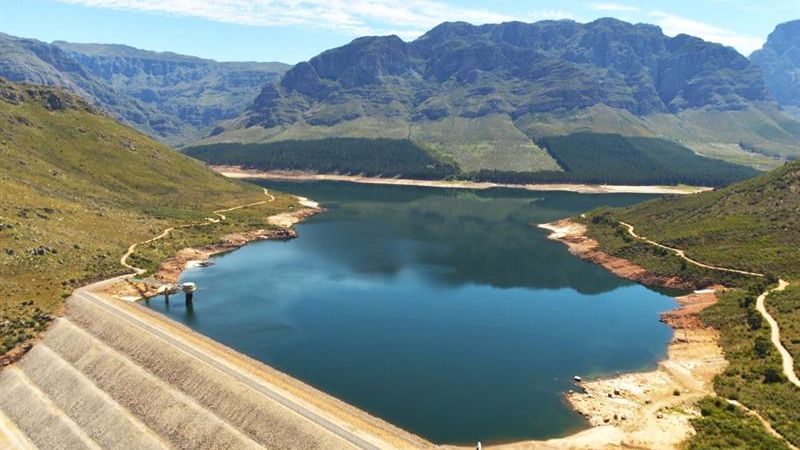The City of Cape Town has issued its latest “water dashboard” report, and it brings some welcome news to thirsty Capetonians.
Dam levels are now down to 25.5%, a change of -0.9%. But the biggest news is undoubtedly the plummeting water consumption.
No ad to show here.
The average daily consumption from the Western Cape Water Supply Schemes’ (WCWSS) six large dams is now just 526-million litres per day. That’s down by nearly 60-million litres per day compared to mid-January. Consumption from all 14 dams in the system equates to 547-million litres per day.
That’s the lowest water consumption figures Cape Town has seen in more than five years. But there’s a good reason, and its not entirely down to residents either: Agricultural usage has dropped substantially.
In early January, farms used some 51% of the water from the major dams. This has since dropped to just 31% in the latest report, or around 160-million litres per day.
“Many of the agricultural users in the Western Cape Supply System, where the City also draws its water from, have used up the water allocated to them as per agreement with the National Department of Water and Sanitation,” writes Deputy Major Ian Neilson in a press release.
Cape Town’s agricultural water consumption fell to just 31% this week, down from more than 50% in mid-January
“Agricultural usage is therefore likely to drop significantly over the next weeks. Currently, the agriculture sector is drawing about 30% of the water in the supply scheme.”
Neilson suggests that usage should fall even further: 15% of the water consumption will be used by agriculture in March, and just 10% in April (around 50-million litres per day taking the current consumption figures into account).
Everything you need to know about Cape Town’s Day Zero plans
As Cape Town’s water crisis deepens, and Day Zero draws nearer, a lot of questionable information is currently circulating on the internet. To ease those worries, here’s everything we know so far, based on communications from the City of Cape Town and other official sources. Read more…
“It must be noted that the City does not have any control over agricultural releases, so this is the best estimate we can make with the information at hand,” he adds.
Currently, 7% of the major dams’ water is consumed by other urban areas surrounding Cape Town with the city itself using 62% (or around 326-million litres per day).
Getting back to the dam levels however, there are some interesting deviations this month.
Kicking off the big three dams, Theewaterskloof continues to shrink, and is now down to just 12.5%. It lost 0.8% over the previous week. The Voëlvlei Dam however lost just 0.3% of its capacity, and remains in the high 17% full range.
The Wemmershoek Dam finally lost water this week, dropping by 1.7%
The Berg River Dam — currently holding the majority of Cape Town’s surface water — fell by just 0.2% over the previous week.
In the south-eastern stretch of the metropole, the Steenbras Upper and Lower dams had mixed fortunes. The Upper lost 3.5%, and now sits at 82.2%, while the Lower gained 0.4%. It was the only dam to gain capacity this week.
And yes, even the Wemmershoek Dam lost water this week. After spending some six weeks within the 52% range, the dam has now dipped to 50.7%, a loss of 1.7%.
Despite another successive dam level drop, Day Zero has been pushed back largely due to reduced consumption.
The date now stands as the 11 May 2018 — more than 90 days away at the time of writing.
Follow the Cape Town water crisis with Memeburn here.
Feature image: Wemmershoek Dam, November 2016 via City of Cape Town
